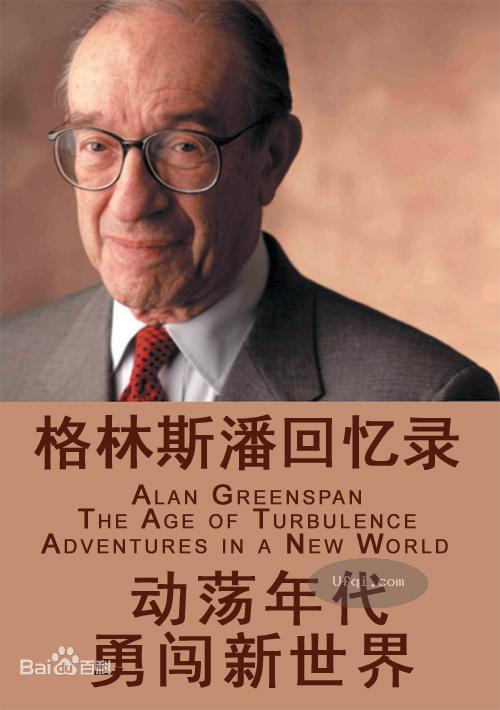


2023-05-25 , 8825 , 104 , 249
美联储主席艾伦格林斯潘回忆录--动荡年代:勇闯新世界-the age of turbulence-55
DOWNTURN
The tone of our friendship shifted with his new position: I no longer called him Dick, but rather "Mr. Vice President," and while he hadn't asked for this new formality, he acquiesced. Our talks were mainly about the challenges facing the United States.
Often we went into very specific detail.
A key topic was energy. The recent oil-price spike had been a reminder that even in the twenty-first century, supplies of basic industrial-age resources remained a major strategic concern. Indeed, Cheney's first major focus in office was to convene a task force on energy policy.
So I gave him my analysis of oil's role in the economy and of how the international oil and natural gas markets were evolving; we discussed nuclear power, liquefied natural gas, and other alternatives.
The greatest economic challenge on the domestic front, I argued, was the aging of thirty million baby boomers. Their retirement was no longer on the distant horizon, the way it had been when I'd become involved in Social Security reform under Reagan.
The oldest boomers were set to turn sixty in six years, and the financial demands on the system would become extremely heavy in the decades beginning in 2010. Social Security and Medicare would need major revision to stay solvent and effective over that long term.
Dick made it clear that domestic economic policy was not going to be his bailiwick. All the same, he was curious about my ideas; he listened closely and often took notes that I assumed he might pass along.
During those last days of December and first days of January, I indulged in a bit of fantasy, envisioning this as the government that might have existed had Gerald Ford garnered the extra 1 percent of the vote he'd needed to edge past Jimmy Carter into a second term.
What was more, for the first time since 1952, the Republican Party had ended up with not just the White House but both houses of Congress. (The Senate was actually split 50-50 between Republicans and Democrats, but as Senate president,
Cheney would hold the tie-breaking vote.)
I thought we had a golden opportunity to advance the ideals of effective, fiscally conservative government and free markets. Reagan had brought conservatism back to the White House in 1980; Newt Gingrich had brought it back to Congress in 1994.
But no one had put it together the way this new administration now had a chance to do.
211
I looked forward to at least four years of working collegially with many of government's best and brightest, men with whom I had shared many memorable experiences. And on a personal basis, that is how it worked out.
But on policy matters, I was soon to see my old friends veer off in unexpected directions.
People's ideas—and sometimes their ideals—change over the years.
I was a different person than I had been when first exposed to the glitter of the White House a quarter of a century before.
So were my old friends: not in personality or character, but in opinions about how the world works and, therefore, what is important.



In the weeks before the inauguration, the FOMC was scrambling to make sense of a complicated picture: the sudden slowdown of our $10-trilliona-year economy and the practical implications for the Fed of the huge ongoing government surpluses.
When the FOMC convened the day after my meeting with the president-elect, the downturn was at the top of the agenda.
Recessions are tricky to forecast because they are driven in part by nonrational behavior. Sentiment about the economic outlook usually does not shift smoothly from optimism to neutrality to gloom; it's like the bursting of a dam, in which a flood backs up until cracks appear and the dam is breached.
The resulting torrent carries with it whatever shreds of confidence there were, and what remains is fear. We seemed to be confronting just such a breach. As Bob McTeer, the head of the Federal Reserve Bank of Dallas, put it:
"The R word is now used openly just about everywhere."
We decided that unless conditions improved over the next two or three weeks, interest rates would have to come down.
For now, our position would be simply to express concern. As our public statement put it:
"The Committee will continue to monitor closely the evolving economic situation... .The risks are weighted mainly toward conditions that may generate economic weakness in the foreseeable future."
Or as one committee member wryly translated, "We are not yet panicking."
212
DOWNTURN
Within two weeks, it was plain that the downtrend was not leveling off.
On January 3, the first business day of the New Year, we convened again via conference call and cut the fed funds rate by half a percentage point, to 6 percent.
The media took this move as a surprise, even though we'd hinted at it before Christmas, but that was fine: the Fed was responding to the markets and the economy.
In fact, we thought that this cut might be the first of many that would be necessary to stabilize the economy. I told the committee that it seemed to me any subsequent cuts might have to be made more quickly than usual.
The same technology that was boosting productivity growth also might be speeding up the process of cyclical adjustment. A just-in-time economy demanded just-in-time monetary policy.
Indeed, that would become our rationale as we cut the fed funds rate by another half percentage point before January was out, and again in March, April, May, and June, bringing it all the way down to 3.75 percent.
The other issue looming large for the FOMC was the disappearance of the national debt. Strange as it may seem in hindsight, in January 2001 the possibility was real. Nearly a decade of rising productivity growth and budget discipline had put the U.S. government in a position to generate surpluses "as far as the eye could see," to borrow the phrase coined by President Reagan's budget director David Stockman in projecting deficits nearly two decades earlier.
Even allowing for the recession that might now be setting in, the nonpartisan Congressional Budget Office was getting ready to raise its projection of the surplus to a stunning $5.6 trillion over ten years. This was $3 trillion higher than the CBO had forecast in 1999, and $1 trillion more than it had predicted just the previous July.



UfqiLong
I'd always had doubts that budget surpluses could persist.
Given the inherent tendency of politicians to err on the side of spending, I found it
difficult to imagine Congress ever accumulating anything but deficits. My skepticism that surpluses were here to stay had been why, a year and a half before, I'd urged Congress to hold off on the nearly $800 billion ten-year tax cut that President Clinton ultimately vetoed.
213
Yet I had to acknowledge that the general consensus among economists and statisticians I respected—not just at the CBO but also at the Office of Management and Budget, at the Treasury, and at the Fed—was that under current policy, surpluses would continue to build. It seemed that the surge in productivity growth unleashed by the technology revolution was upsetting the old assumptions.
As the evidence for this ongoing surplus mounted, I felt an odd sense of loss.
The economic model I carried around in my head seemed obsolete. Congress was in fact not spending money faster than the Treasury was taking it in. Had human nature changed? For months had been wrestling with the idea that it might be possible—it was a question of do you believe your crazy old theories or your lying eyes?
My colleagues at the FOMC seemed a bit disoriented too.
In our late-January meeting, we spent hours trying to imagine how the Fed would operate in a brave new world of minimal federal debt.
Of course, shedding the debt burden would be a happy development for our country but it would nevertheless pose a big dilemma for the Fed.
Our primary lever of monetary policy was buying and selling treasury securities—Uncle Sam's IOUs.
But as the debt was paid down, those securities would grow scarce, leaving the Fed in need of a new set of assets to effect monetary policy.
For nearly a year, senior Fed economists and traders had been exploring the issue of what other assets we might buy and sell.
A result was a dense 380-page study that plopped on our desks in January.
The good news was that we weren't going out of business;
the bad news was that nothing could really match the treasuries market in size, liquidity, and freedom from risk.
To conduct monetary policy, the report concluded, the Fed would have to learn to manage a complex portfolio of municipal bonds, bonds issued by foreign governments, mortgage-backed securities, auctioned discount-window credits, and other debt instruments.
It was a daunting prospect.
"I feel kind of like Alice in Wonderland," Cathy Minehan,
the president of the Federal Reserve Bank of Boston, had said when the issue first came up, and we all knew what she meant.
The very fact of the discussion showed how profoundly and rapidly we thought the economic landscape might change.
The surplus was also what had Paul O'Neill and me excited as we met during January to swap budget ideas. We both knew, of course, that the CBO's figure of $5.6 trillion over ten years needed to be unpacked.
214
(未完待续, To be contd)



🔗 连载目录
🤖 智能推荐







